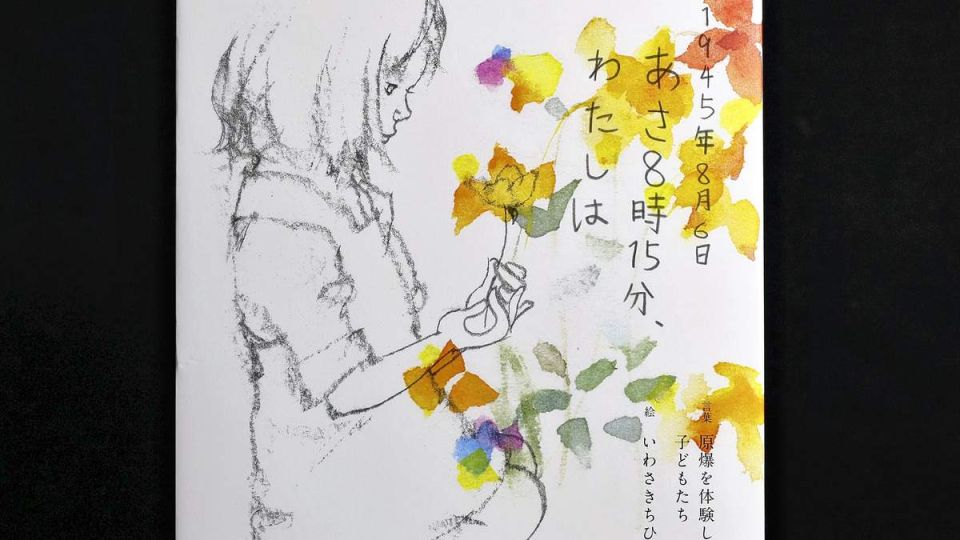October 1, 2025
TOKYO – Fifty-eight years after its initial publication, an impactful picture book featuring firsthand accounts from children who survived the atomic bombing of Hiroshima has been re-edited for a new generation.
The editor, a descendant of an atomic bomb survivor, hopes the book will inspire today’s children to appreciate the value of life. Through her editing work, Shigeko Hirayama, 44, sought to convey the horror of the atomic bomb — an experience that her grandmother was never able to speak about.
Hirayama, who is from Hiroshima and now lives in Tokyo, first began to understand the war in her elementary school days.
Her mother told her that her grandfather was dispatched to Manchuria, during the war, and that her grandmother was exposed to the atomic bomb in Hiroshima when she was 17.
Her grandmother was not seriously injured by the bomb, but Hirayama was surprised to learn that she went to help treat the many injured survivors at an evacuation site.
During her second year of junior high school, Hirayama asked her grandmother directly about the bombing. Her grandmother, who had been talking cheerfully, suddenly fell silent. Struggling to speak, she whispered, “I can’t talk about it.”
Hirayama felt a sharp pang in her chest, and thought, “War is deeper and darker than anything I could ever imagine.”
Two years ago, she changed jobs to work at Doshinsha Publishing Co., in Bunkyo Ward, Tokyo, a publishing company that puts out children’s books on such themes as war and peace.
She made the switch because she wanted to convey the tragedy of war and the importance of peace through picture books, having previously worked as an editor since graduating from university.

Shigeko Hirayama shows a picture book she re-edited in Bunkyo Ward, Tokyo, in August. PHOTO: THE YOMIURI SHIMBUN
To coincide with the 80th anniversary of the end of World War II, she re-edited the company’s 1967 publication “Watashi ga Chiisakatta Toki ni” (When I was little), releasing the new version in July as “1945-nen 8-gatsu Muika, Asa 8-ji 15-fun, Watashi wa” (Aug. 6, 1945, 8:15 a.m., I was…).
The new book compiles six accounts from children who experienced the death of someone close — such as those who lost parents in the atomic bombing of Hiroshima or witnessed people of their generation die during evacuation.
To help today’s elementary school students imagine what happened, she selected writings from children who were between age 4 and sixth grade when the bomb fell, she said.
While creating the new book, memories of her grandmother crossed her mind. She wondered if her grandmother had recalled that day, which caused her to choke up.
“I don’t know everything about my grandmother’s experience or her pain. Nevertheless, I have to pass the story on as someone whose life is tied to hers,” she said. “I hope this book will be a chance for children to feel how precious their lives are.”
Contributions from children’s author
Kimiko Aman, 94, a children’s literature author known for works such as “Chii-chan no Kageokuri,” contributed to the new book.
“Kageokuri” is a game played by Japanese children that involves staring intensely at one’s shadow for several seconds and then immediately looking up at the sky, where the afterimage of their shadow appears as a white outline.
Aman, who spent her childhood in Manchuria, returned to Japan about two years after the war ended.
In the book, she recounts memories etched in her heart, such as learning the term “new model bomb” from the newspaper the day after the atomic bombing, the desolate gray landscape she saw from the train window while passing through Hiroshima on her repatriation trip, and the sight of her mother silently joining her hands in prayer.
“It’s wonderful to be born in the modern age, free from the knowledge of war,” Aman said. “I hope children experience that joy. However, they should also be aware that a single bomb stole the futures of so many children.”

